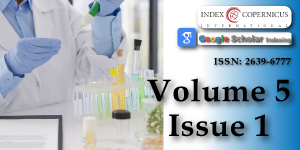Sequence-independent single-primer-amplification (SISPA) as a screening technique for detecting unexpected RNA viral adventitious agents in cell cultures
Main Article Content
Abstract
The sequence-independent, single-primer amplification (SISPA) enables the random amplification of nucleic acids, allowing the detection and genome sequencing of different viral agents. This feature of SISPA method provides evidence for application of it in monitoring the presence of adventitious RNA viruses in cell cultures. We evaluated SISPA method for the detection of a challenge RNA virus representing adventitious agent in cell cultures. Besides, by optimizing the SISPA method in our laboratory, we found false-positive results on negative control lanes in electrophoresis gels. To investigate the sources of contamination, false-positive results of SISPA were cloned into Escherichia coli cells, sequenced, and phylogenetically analyzed. This data revealed that the SISPA method can be used as an adjunct method to confirm the absence of unexpected adventitious RNA viruses in cell cultures. The phylogenetic analysis of SISPA contaminant sequences showed that the false-positive results were caused by nucleic acid amplification of commercial cDNA synthesis kit reagents, probably tracing back to expression plasmids and host ribosomal sequences, used for the production of enzymes. Therefore, laboratories using random amplification methods must be constantly aware of the potentials of such contaminations, yielding false-positive results and background noise in the final NGS reads.
Article Details
Copyright (c) 2021 Bahador D, et al.

This work is licensed under a Creative Commons Attribution 4.0 International License.
Petriccani J, Sheets R, Griffiths E, Knezevic I. Adventitious agents in viral vaccines: lessons learned from 4 case studies. Biologicals. 2014; 42: 223-236. PubMed: https://pubmed.ncbi.nlm.nih.gov/25135887/
Cleveland MH, Anekella B, Brewer M, Chin PJ, Couch H, et al. Report of the 2019 NIST-FDA workshop on standards for next generation sequencing detection of viral adventitious agents in biologics and biomanufacturing. Biologicals. 2019; 64: 76-82.PubMed: https://pubmed.ncbi.nlm.nih.gov/32094072/
Reyes GR, Kim JP. Sequence-independent, single-primer amplification (SISPA) of complex DNA populations. Molecular and Cellular Probes. 1991; 5: 473-481. PubMed: https://pubmed.ncbi.nlm.nih.gov/1664049/
Ambrose HE, Clewley JP. Virus discovery by sequence‐independent genome amplification. Rev Med Virol. 2006; 16: 365-383. PubMed: https://pubmed.ncbi.nlm.nih.gov/16929467/
Bexfield N, Kellam P. Metagenomics and the molecular identification of novel viruses. Veterin J. 2011; 190: 191-198. PubMed: https://pubmed.ncbi.nlm.nih.gov/21111643/
Djikeng A, Halpin R, Kuzmickas R, Depasse J, Feldblyum, Sengamalay N, et al. Viral genome sequencing by random priming methods. BMC genomics. 2008; 9: 1-9. PubMed: https://pubmed.ncbi.nlm.nih.gov/18179705/
Victoria JG, Kapoor A, Dupuis K, Schurr DP, Delwart EL. Rapid identification of known and new RNA viruses from animal tissues. PLoS Pathogens. 2008; 4: e1000163. PubMed: https://pubmed.ncbi.nlm.nih.gov/18818738/
Afonso CL. Sequencing of avian influenza virus genomes following random amplification. Biotechniques. 2007; 43: 188-192. PubMed: https://pubmed.ncbi.nlm.nih.gov/17824386/
Bishop-Lilly KA, Turell MJ, Willner KM, Butani A, Nolan NM, et al. Arbovirus detection in insect vectors by rapid, high-throughput pyrosequencing. PLoS Neglected Tropical Diseases. 2010; 4: e878. PubMed: https://pubmed.ncbi.nlm.nih.gov/21085471/
Blomström AL, Widén F, Hammer AS, Belák S, Berg M. Detection of a novel astrovirus in brain tissue of mink suffering from shaking mink syndrome by use of viral metagenomics. J Clin Microbiol. 2010; 48: 4392-4396. PubMed: https://pubmed.ncbi.nlm.nih.gov/20926705/
Marcacci M, Deluca E, Zaccaria G, Ditommaso M, Mangone I, et al. Genome characterization of feline morbillivirus from Italy. J Virologi Meth. 2016; 234, 160-163. PubMed: https://pubmed.ncbi.nlm.nih.gov/27155238/
Victoria JG, Kapoor A, Li L, Blinkova O, Slikas B, et al. Metagenomic analyses of viruses in stool samples from children with acute flaccid paralysis. J Virol. 2009; 83: 4642-4651. PubMed: https://pubmed.ncbi.nlm.nih.gov/19211756/
Sasaki K, Higashihara M, Inoue K, Igarashi Y, Makino S. Studies on the development of a live attenuated mumps virus vaccine. I. Attenuation of the Hoshino “wold” strain of mumps virus. Kitasato Arch Expe Med. 1976; 49: 43-52. PubMed: https://pubmed.ncbi.nlm.nih.gov/828947/
Makino S, Yammane Y, Sasaki K, Nagashima T, Higashihara M. Studies on the development of a live attenuated mumps virus vaccine. II. Development and evaluation of the live “Hoshino” mumps vaccine. Kitasato Arch Exp Med. 1976; 49: 53-62. PubMed: https://pubmed.ncbi.nlm.nih.gov/1025341/
Knox K, Carrigan D, Simmons G, Teque F, Zhou Y, et al. No evidence of murine-like gammaretroviruses in CFS patients previously identified as XMRV-infected. Science. 2011; 333L 94-97. PubMed: https://pubmed.ncbi.nlm.nih.gov/21628393/
Sato E, Furuta RA, Miyazawa T. An endogenous murine leukemia viral genome contaminant in a commercial RT-PCR kit is amplified using standard primers for XMRV. Retrovirology. 2010; 7: 110. PubMed: https://pubmed.ncbi.nlm.nih.gov/21171978/
Zheng H, Jia H, Shankar A, Heneine W, Switzer WM. Detection of murine leukemia virus or mouse DNA in commercial RT-PCR reagents and human DNAs. PLoS One. 2011; 6: e29050. PubMed: https://pubmed.ncbi.nlm.nih.gov/22205995/
Champlot S, Berthelot C, Pruvost M, Bennett EA, Grange T, et al. An efficient multistrategy DNA decontamination procedure of PCR reagents for hypersensitive PCR applications. PloS one. 2010; 5: e13042. PubMed: https://pubmed.ncbi.nlm.nih.gov/20927390/
Evans GE, Murdoch DR, Anderson TP, Potter HC, George PM, et al. Contamination of Qiagen DNA extraction kits with Legionella DNA. J Clin Microbiol. 2003; 41, 3452-3453. PubMed: https://pubmed.ncbi.nlm.nih.gov/12843121/
Koncan R, Valverde A, Morosini MI, García-Castillo M, Cantón R, et al. Learning from mistakes: Taq polymerase contaminated with β-lactamase sequences results in false emergence of Streptococcus pneumoniae containing TEM. J Antimicrob Chemother. 2007; 60: 702-703. PubMed: https://pubmed.ncbi.nlm.nih.gov/17597059/
Mühl H, Kochem AJ, Disqué C, Sakka SG. Activity and DNA contamination of commercial polymerase chain reaction reagents for the universal 16S rDNA real-time polymerase chain reaction detection of bacterial pathogens in blood. Diagn Microbiol Infect Dis. 2010; 66: 41-49. PubMed: https://pubmed.ncbi.nlm.nih.gov/18722072/
Newsome T, Li BJ, Zou N, Lo SC. Presence of bacterial phage-like DNA sequences in commercial Taq DNA polymerase reagents. J Clin Microbiol. 2004; 42: 2264-2267. PubMed: https://pubmed.ncbi.nlm.nih.gov/15131208/
Thoendei M, Jeraldo P, Greenwood-Quaintance KE, Yao J, Chia N, et al. Impact of contaminating DNA in whole-genome amplification kits used for metagenomic shotgun sequencing for infection diagnosis. J Clin Microbiol. 2017; 55: 1789-1801. PubMed: https://pubmed.ncbi.nlm.nih.gov/28356418/
Wally N, Schneider M, Thannesberger J, Kastner M, Bakonyi T, et al. Plasmid DNA contaminant in molecular reagents. Sci Rep. 2019: 9: 1-11. PubMed: https://pubmed.ncbi.nlm.nih.gov/30733546/

